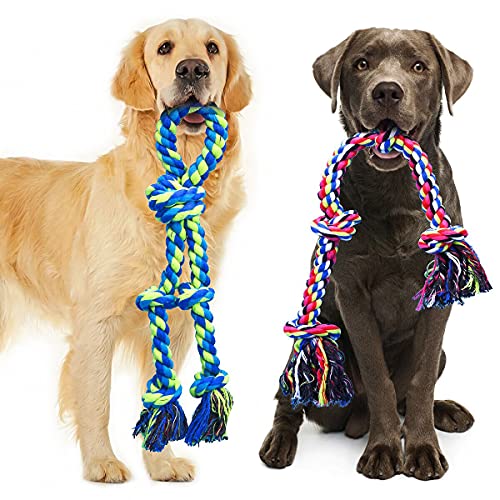Golden Retrievers are known for their friendly demeanor and gentle nature, making them perfect candidates for therapy work. If you’ve got one of these lovable pups and want to share their warmth with others, certifying them as a therapy dog could be a rewarding journey for both of you.
Understanding Therapy Dogs
Therapy dogs provide comfort and support in hospitals, schools, and various therapeutic settings. Their friendly demeanor and intuitive nature make them ideal for working with people in need.
What Is a Therapy Dog?
A therapy dog is trained to provide emotional support and comfort to individuals facing various challenges, such as illness, anxiety, or trauma. Unlike service dogs, therapy dogs don’t perform specific tasks to aid individuals with disabilities. Instead, they offer companionship and a calming presence, enhancing the wellbeing of people in healthcare facilities, schools, or community programs. Certification and training help ensure therapy dogs can safely interact with diverse populations while behaving calmly in different environments.
Differences Between Therapy Dogs and Service Dogs
Therapy dogs and service dogs serve different purposes.
- Tasks: Service dogs perform specific tasks for individuals with disabilities, like guiding the visually impaired or alerting to medical emergencies. Therapy dogs focus on providing emotional support without performing assistance tasks.
- Legal Status: Service dogs are protected under the Americans with Disabilities Act (ADA) and have public access rights. Therapy dogs lack the same legal status and may not have universal access in public spaces.
- Training: Service dogs undergo extensive training tailored to their handler’s disabilities. Therapy dog training emphasizes socialization, obedience, and comfort in various settings.
Understanding these differences helps clarify the unique roles therapy dogs play in providing support and enhancing the lives of those they interact with.
Benefits of Having a Therapy Dog
Having a therapy dog offers numerous advantages that positively impact both the handler and those they interact with. Golden Retrievers, with their gentle demeanor, excel in providing emotional support and enhancing mental health.
Emotional Support and Companionship
Therapy dogs provide companionship, reducing feelings of loneliness and isolation. Their presence brings comfort, making difficult situations more bearable. Golden Retrievers, known for their friendly disposition, are especially adept at forming strong bonds with individuals. Interaction with these dogs promotes warmth and connection, helping people express emotions more freely and feel understood.
Impact on Mental Health
Therapy dogs contribute significantly to mental health improvement. Their calming presence promotes relaxation, reducing anxiety and stress levels. Research indicates that having a therapy dog can lower symptoms of depression and improve overall mood. Additionally, sharing time with a Golden Retriever encourages physical activity, which plays a vital role in boosting mental health. Engaging in play or walks with these dogs provides a sense of purpose and accomplishment.
Steps to Certify a Golden Retriever as a Therapy Dog
Certifying a Golden Retriever as a therapy dog involves a series of steps that ensure the dog is well-prepared for the role. I’ll outline the key areas to focus on during the certification process.
Choosing the Right Golden Retriever
Selecting a suitable Golden Retriever is essential. Look for dogs with a calm demeanor and sociable nature, as these traits are crucial for therapy work. Assess the dog’s reaction to various stimuli, including loud noises or unfamiliar environments, to ensure they remain relaxed. Age also plays a role; dogs between 1 and 2 years typically exhibit the necessary maturity and stability. Additionally, consider dogs with prior experience in social settings, as this background supports their ability to interact positively with different people.
Basic Training Requirements
Training serves as the foundation for a successful therapy dog. Start with basic obedience commands like sit, stay, come, and down. A therapy dog should respond consistently to commands, demonstrating focus and reliability. Socialization is equally important; expose the dog to diverse environments and people. Incorporate distractions during training sessions to simulate real-life scenarios. Regular practice helps reinforce desired behaviors and builds confidence. It’s beneficial to enroll in obedience classes to provide structured training and social opportunities.
Therapy Dog Certification Organizations
Several organizations specialize in therapy dog certifications. Research the criteria for each to find the best fit for your Golden Retriever. Notable organizations include:
| Organization Name | Certification Process |
|---|---|
| Therapy Dogs International | Requires passing an evaluation and completion of training |
| The Alliance of Therapy Dogs | Offers tests focusing on evaluation, temperament, and skills |
| Pet Partners | Involves an application, evaluation, and health checks |
Each organization has specific requirements; understanding them helps ensure a smooth certification process. Follow the organization’s guidelines closely for successful certification.
Preparing for the Certification Process
Preparing for therapy dog certification involves gathering necessary documentation and ensuring your Golden Retriever receives adequate training and socialization.

Necessary Documentation
« What to Do If a Golden Retriever Chokes: Essential Tips for Pet Owners
Explore Golden Retriever Rescue Volunteer Roles: Make a Difference Today »
You’ll need to compile specific documents for certification. These documents typically include proof of vaccinations, health records, and a completed application form provided by the certification organization. Some organizations may also require a temperament assessment form, completed by a qualified evaluator, to assess your dog’s behavior in different situations. Maintaining detailed records supports your dog’s eligibility for certification.
Training and Socialization Tips
Training and socialization form the foundation of successful therapy work. Start with basic obedience commands like sit, stay, and come. Consistent reinforcement of these commands builds reliability in your dog’s behavior. Socialization involves exposing your Golden Retriever to various environments, people, and other animals. Gradually introduce them to busy areas, different sounds, and diverse groups of people. Positive experiences during these interactions improve their confidence and comfort around others, making them better suited for therapy roles. Regular practice through group classes or therapy dog preparation courses enhances their skills and readiness for certification.
The Certification Process
Certifying a Golden Retriever as a therapy dog involves a structured process that includes assessments and evaluations to ensure the dog meets specific standards. This section outlines the critical components of that process.
Assessment and Evaluation
Assessment and evaluation focus on determining the dog’s suitability for therapy work. Organizations may use temperament tests to assess a dog’s reliability and calmness in various situations. Observing the dog’s interactions with people and other animals during these assessments is essential. A friendly demeanor, comfort around diverse environments, and an eagerness to engage with others are all positive signs. Clear communication from trainers supervising the assessment provides valuable insights into the dog’s readiness for therapy work.
Observations and Testing Requirements
Observations and testing requirements vary by organization but often include specific behavioral tasks. Common tasks include:
- Basic Obedience: Demonstrating commands such as sit, stay, and come.
- Socialization Skills: Interacting well with strangers and other pets in different settings.
- Calmness Under Pressure: Remaining composed during unexpected noises or movements.
Most organizations also require a signed temperament assessment form to confirm the dog behaves appropriately in various scenarios. Preparing your dog through real-life experiences can help them become familiar with different environments, reducing anxiety during assessments. Careful attention to these requirements enhances the chances of successfully certifying your Golden Retriever as a therapy dog.
Conclusion
Certifying my Golden Retriever as a therapy dog has been one of the most fulfilling journeys I’ve embarked on. The joy and comfort these dogs bring to others is truly remarkable. Watching my pup thrive in different environments and connect with people in need has filled my heart with pride.
If you’re considering this path, remember that patience and preparation are key. Each step brings you closer to making a positive impact in someone else’s life. I can’t wait for you to experience the special bond that forms when your dog becomes a source of comfort and joy for others. Embrace the journey and enjoy every moment with your furry friend.












